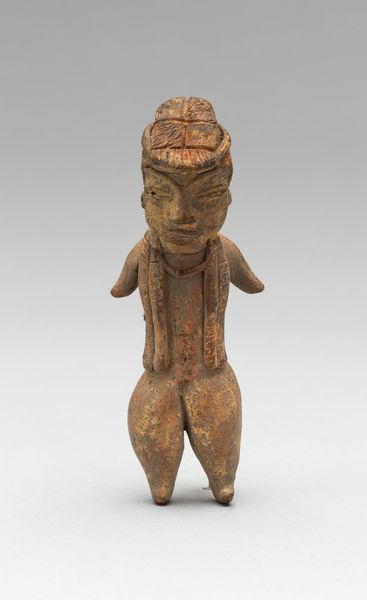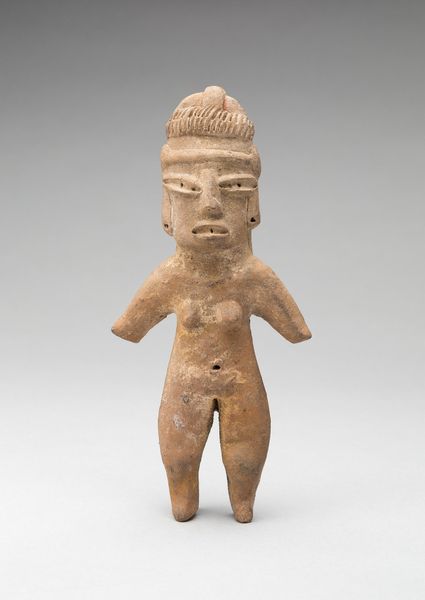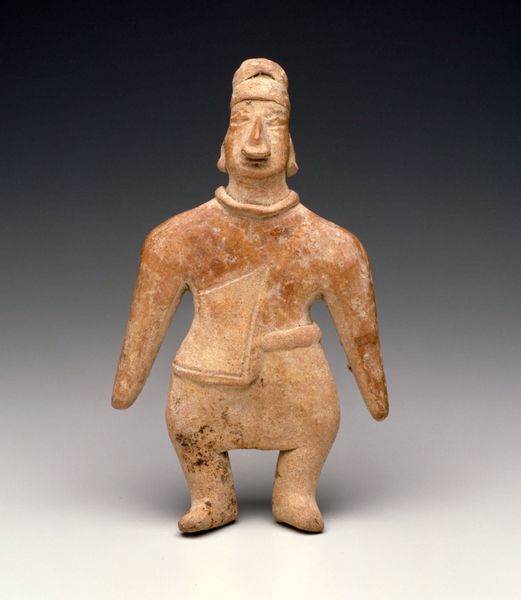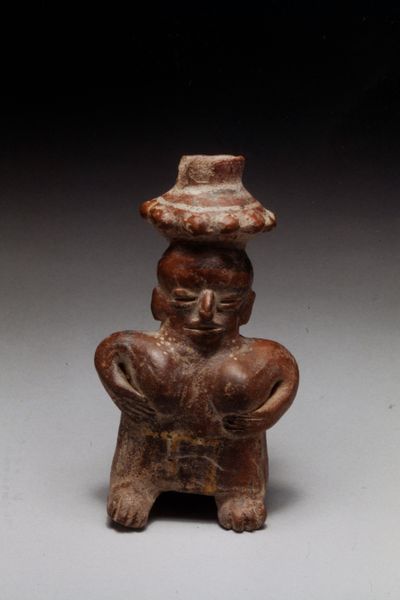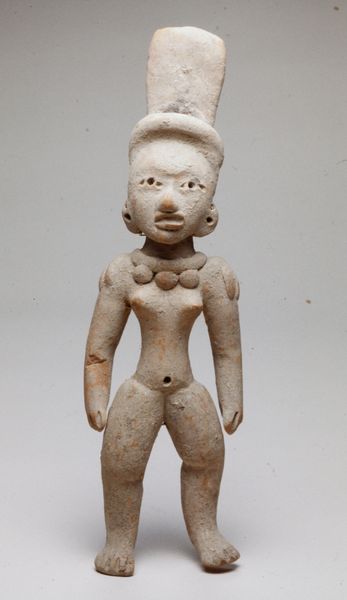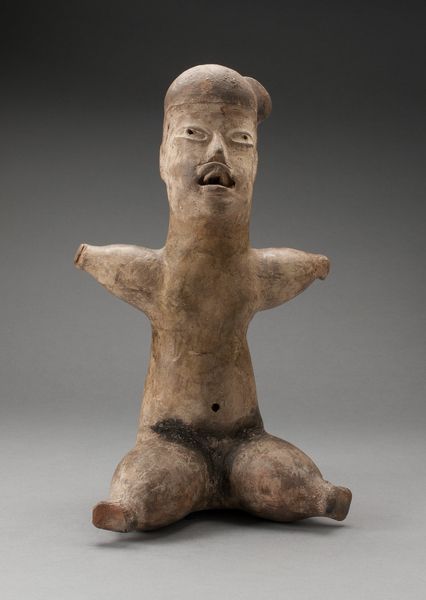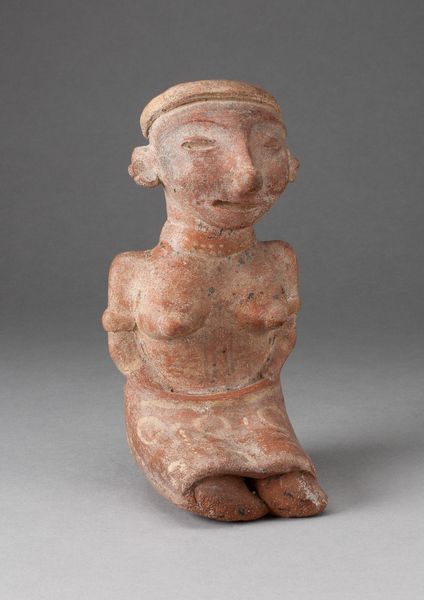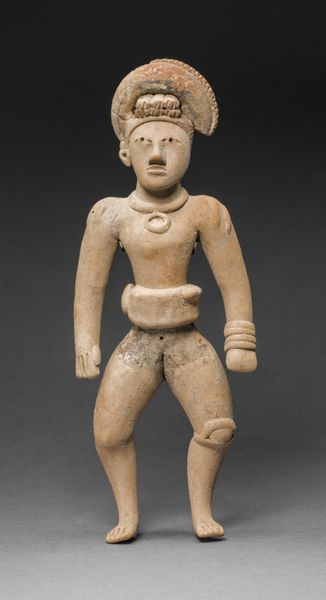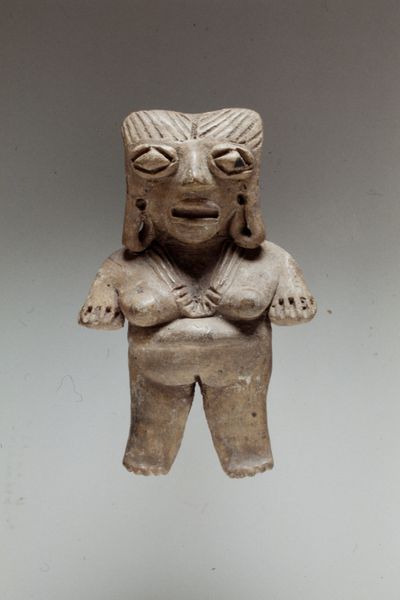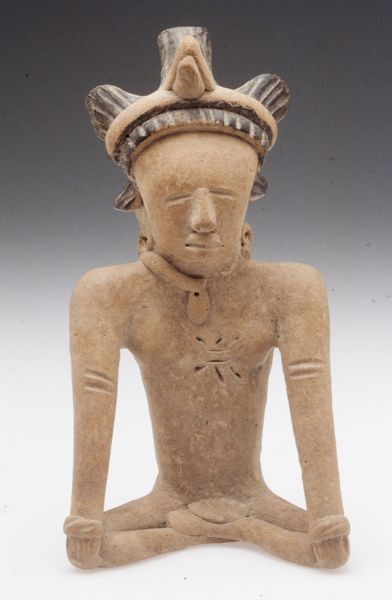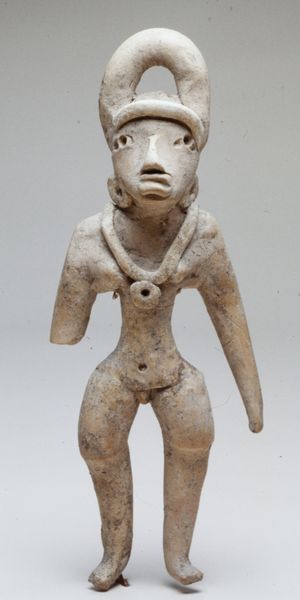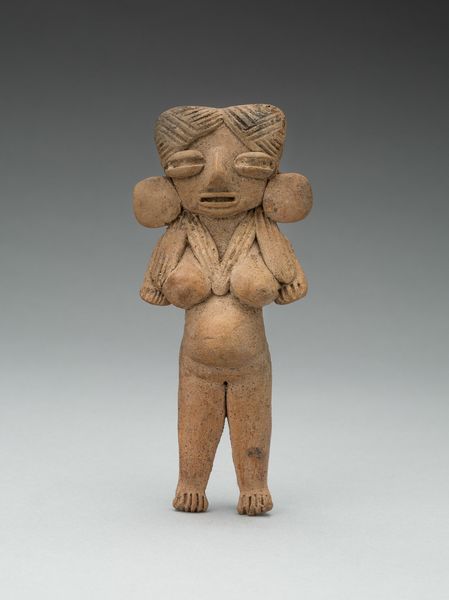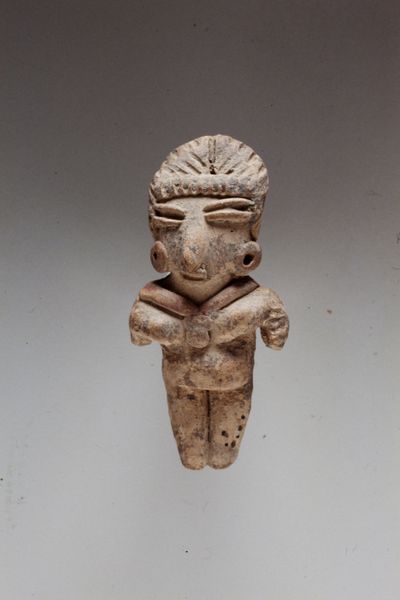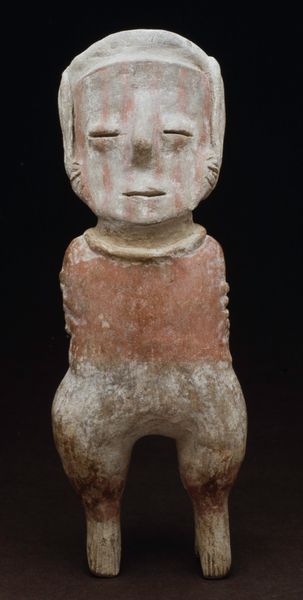
ceramic, sculpture, terracotta
#
sculpture
#
ceramic
#
figuration
#
sculpture
#
terracotta
Dimensions: 8 7/8 x 7 in. (22.54 x 17.78 cm)
Copyright: Public Domain
This Olmec figure, made of ceramic, presents a complex array of symbols. The infantile features combined with a powerful stance are prominent here. The figure's open arms and splayed legs suggests vulnerability, yet the face has a stern expression. It is fascinating how the desire to portray the transition from child to man has manifested throughout time. We can look at ancient Roman funerary sculpture where similar features have been employed. Though the contexts differ vastly, the intent to capture the essence of human development remains consistent. The image acts on the viewer on a deep, subconscious level. This reflects our shared recognition of the stages of human growth. The tension between the figure's infantile features and aggressive pose evokes a powerful emotional response, linking us to the complex interplay between our own childhood and adulthood. This reveals how cultural memory and subconscious processes affect our perception and interpretation of artistic motifs.
Comments
minneapolisinstituteofart almost 2 years ago
⋮
The Olmec people developed the first cities of Mesoamerica. Situated in the tropical lowlands of Mexico, these early urban societies produced most of the major features of later regional civilizations: monumental architecture and sculpture, hieroglyphic writing, a calendrical system, and intensive agriculture. The distinctive Olmec art style, expressive of their religion, greatly influenced subsquent Mesoamerican art.A prominent motif in Olmec art is the "baby face," a fleshy human face with drooping mouth, squinting eyes, and snub nose. Here the distinctive features are part of a naturalistic depiction, but in many Olmec pieces they merge with feline traits like snarling lips and fangs. These pervasive references to the spiritual union of a jaguar and a human allude to an Olmec conception of the supernatural status of rulers.
Join the conversation
Join millions of artists and users on Artera today and experience the ultimate creative platform.
